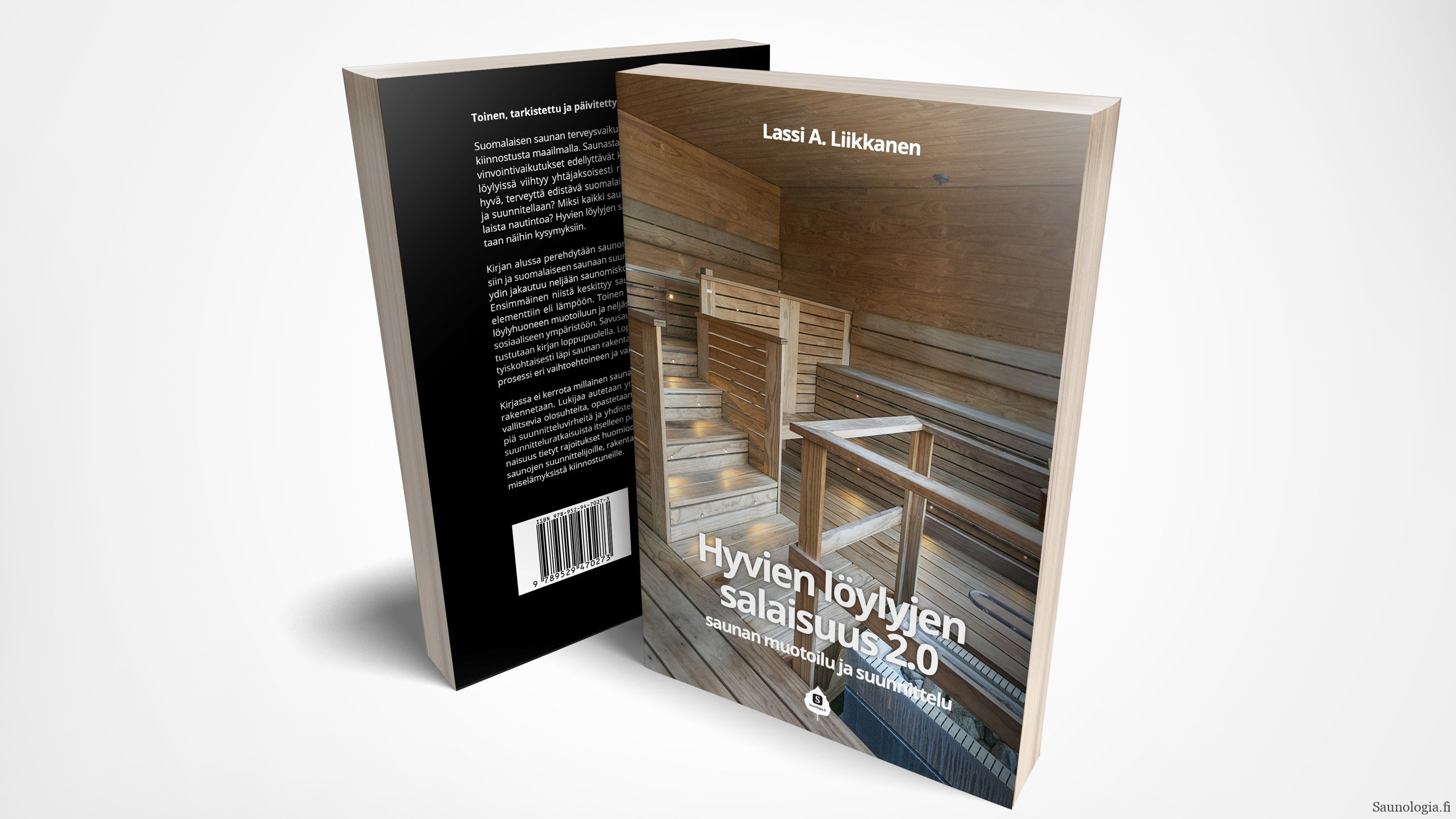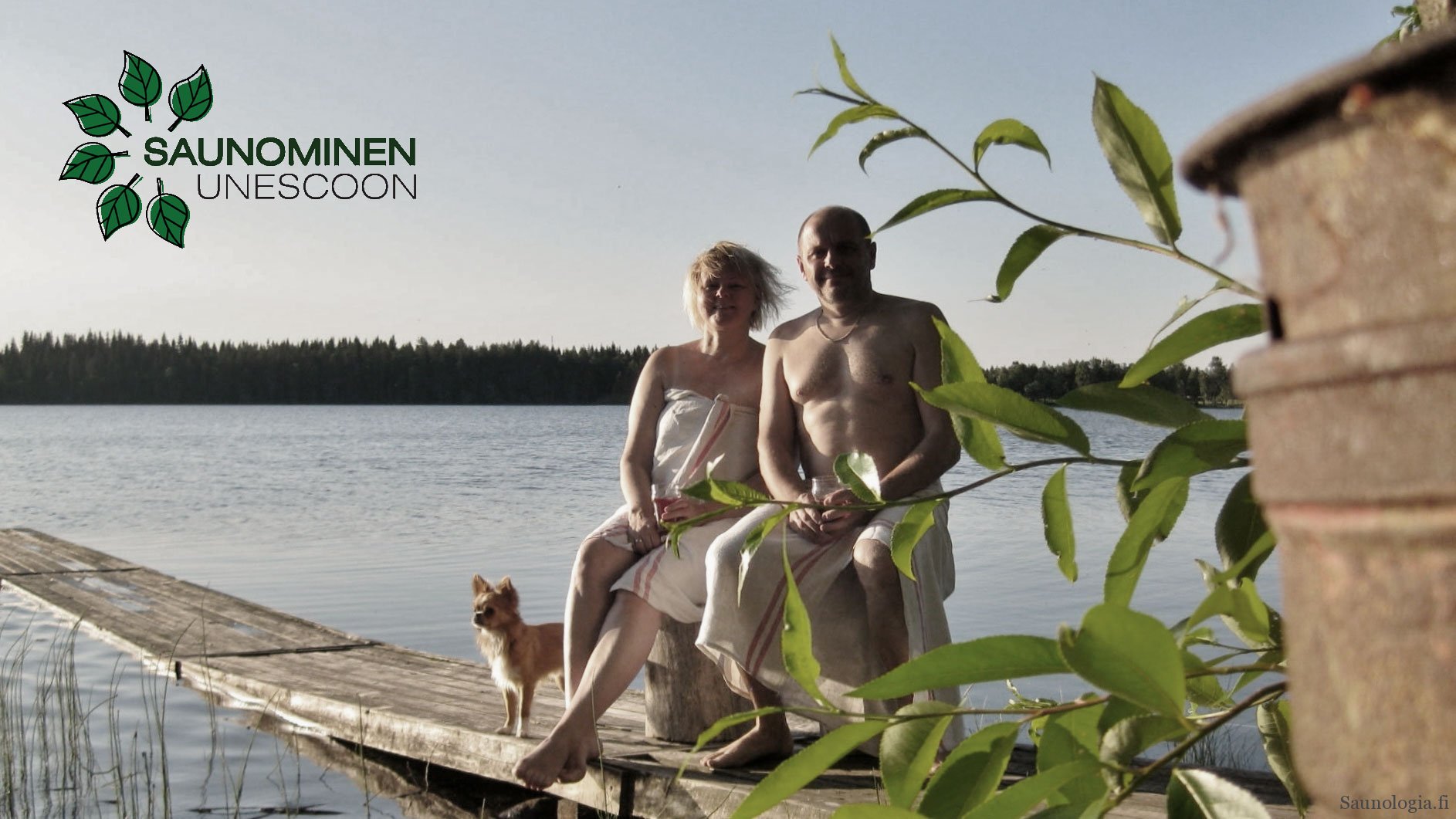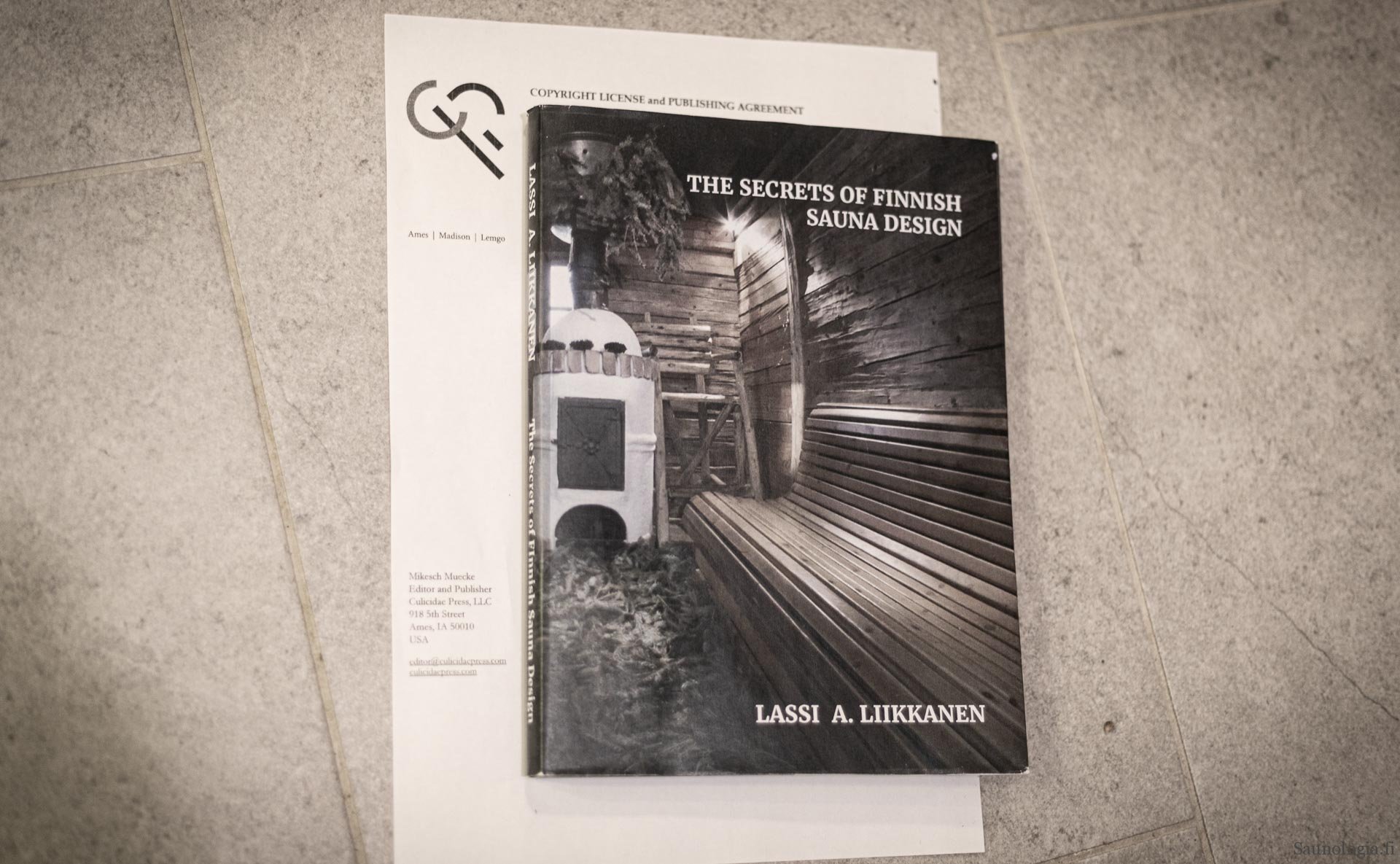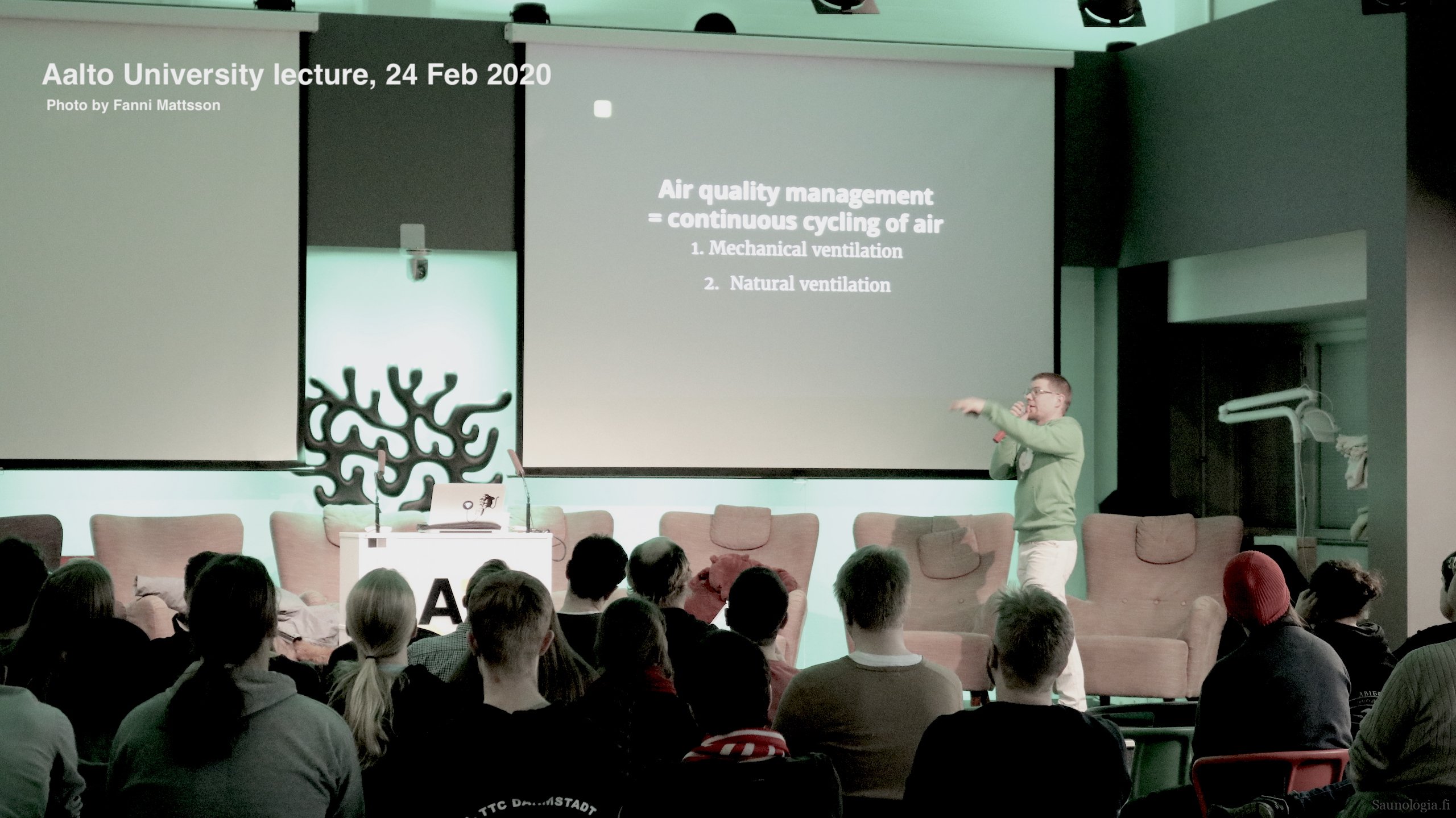Book review: The origin story of the barrel sauna
A small book about how the history of barrel saunas in Finland began in 1965 was published in late 2024. In this review, I analyze the story told in the book and also try to peek beyond it. The book itself is a short read, but does the job of documenting the origins of barrel saunas from Koskenpää in an understandable way, despite its shortcomings.
Tiivistelmä suomeksi
Jukka Keronen on kirjoittanut tiiviin historiikin Koskenpäässä 1960-luvulla syntyneestä tynnyrisaunasta. Kirja kertoo yhden keksinnön viihdyttävästi ja tuo esiin miksei Koskenpään tynnyri ollut sellainen susi syntyessään, joksi sitä ilmeisesti halpakopioineet tynnyrimaakarit sen muokkasivat. Kirja on puutteistaan huolimatta mukava lisä suomalaiseen saunakirjallisuuteen.
What book are we talking about
Tynnyrisaunan tarina – Koskenpäältä mailman markkinoille [The story of barrel sauna, from Koskenpää to the world] by Jukka Keronen is a self-published, print-on-demand Finnish paperback book delivered via Books on Demands Gmbh. It is also available in a digital edition (ePub). The book is primarily grayscale, with few color photos, and runs 92 pages. Mr. Keronen has previously published a few similar chronicles about local history, including stories of small sports teams.
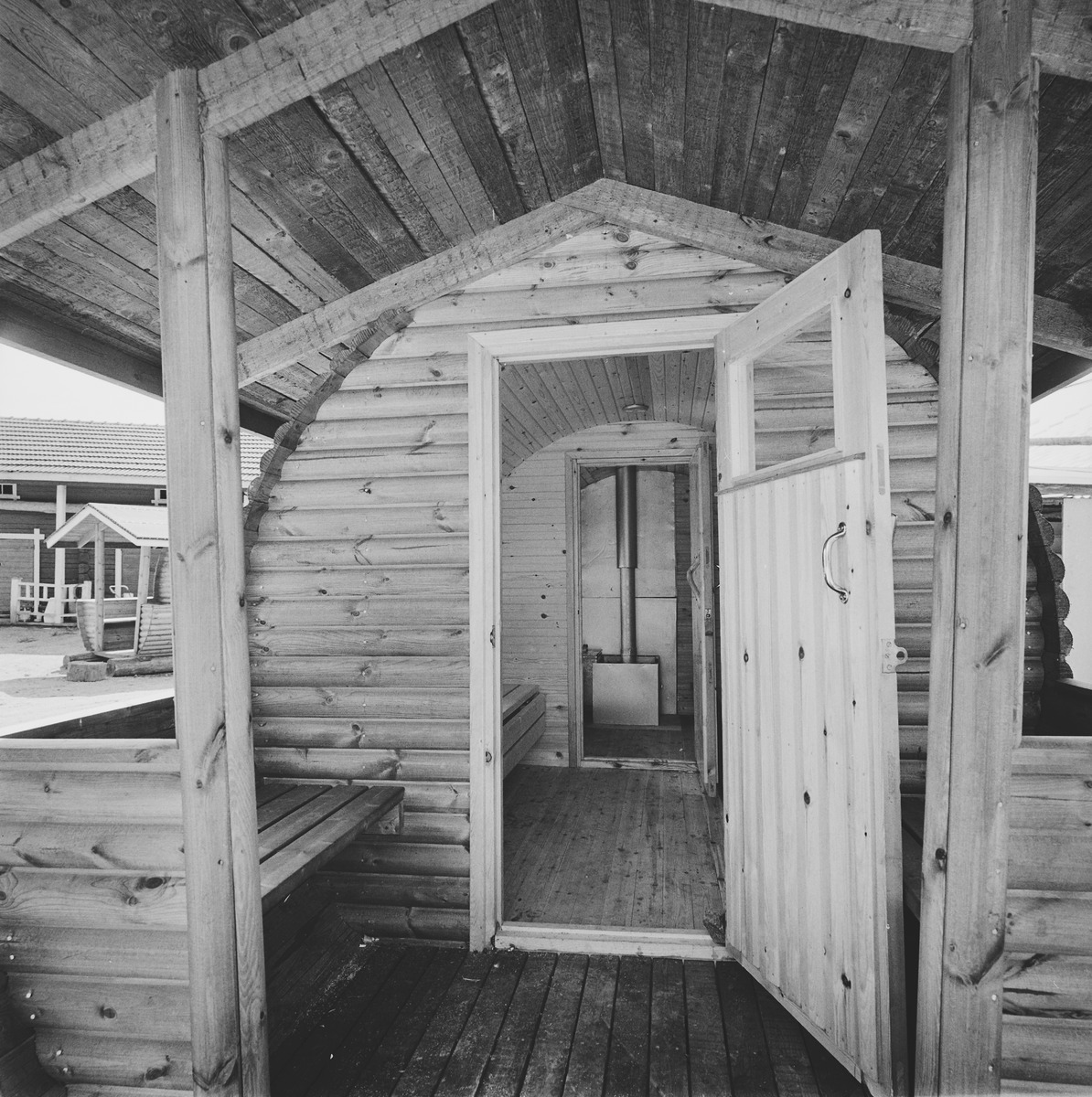
The book tells the origin story of the Finnish barrel sauna, which began at Koskenpää, a small rural community in central Finland. The story includes a selection of historical photos, mostly from the 1960s, and contemporary interviews of the Niinimäki family business, which nourished the barrel sauna. The style is light and relies heavily on long, verbatim quotes of the surviving members of the family and current business owners.
How did the barrel sauna come about?
The municipality of Koskenpää never was or became a major hub in Finland. However, Koskenpää was rich in forests and during the early 20th century, there was a tar factory. The heydays of the tar business were already long past, but the production continued until the 1950s. In 1956, the factory business stopped, and the premises and machines were torn down and auctioned, including the vessels for holding tar. Can you guess what they were?
The local farmer, Mr. Esko Niinimäki, an idea-rich veteran of the Second World War, decided to buy up two old tar barrels. He had the habit of collecting “raw materials” for potential later inventions, to the horror of his family. Initially, it looked like the two 6-7 m3 barrels would just lay waste at Esko’s campsite business for eternity. However, in a few years, the sight of the barrels sparked the idea that maybe a barrel could be used for a sauna?
Thanks to the well-available expertise of local carpenters, the first sauna prototype was quickly built under Esko’s supervision. Apparently, this took place in the early 1960’s. This proof of concept convinced him and a few locals that this type of sauna would work very well and could be offered commercially. The sales and further product development began in 1965. The business bootstrapped quickly, using the workforce to create barrels mostly from local materials; even the heaters were made within the company.

Koskenpää barrel sauna was the first company in Finland to invent and commercialize the sauna. Still, itself it never became a big company unlike Harvia, which was located less than 30 km from Koskenpää, in Muurame. The book states that few thousand models have been sold over the past sixty years. Most of them are found in Finland, but Sweden also became an important destination. However, domestic copycats started quickly creating barrel variations that were not true to the original design. The barrel sauna never received a patent and Koskenpää Tynnyrisauna eventually became a small player in the game it had invented.

The distinctive features of the first barrels
The sauna concept created by Esko had several interesting properties, which today are not typical features in barrel saunas. First, the sauna walls had four layers: 1.5” outer lining, insulation, vapor barrier, and ¾” interior paneling. The structure weighs 1.6 tons and a ton more with a dressing room. Second, the wood-burning stove was fired from the outside, opposite the door. There is a lot of vague talk about how the ventilation was arranged around the heater. In advertisements, it was claimed that the sauna would heat up in 20-30 minutes regardless of the season.
It should be noted that Koskenpää saunas were modeled in a barrel fashion but not barrels in a technical sense. For example, the attached photo of an actual sauna in a barrel displays a barrel originally used for holding some liquid. The structure of Koskenpää barrel was a sauna, shaped as a barrel.
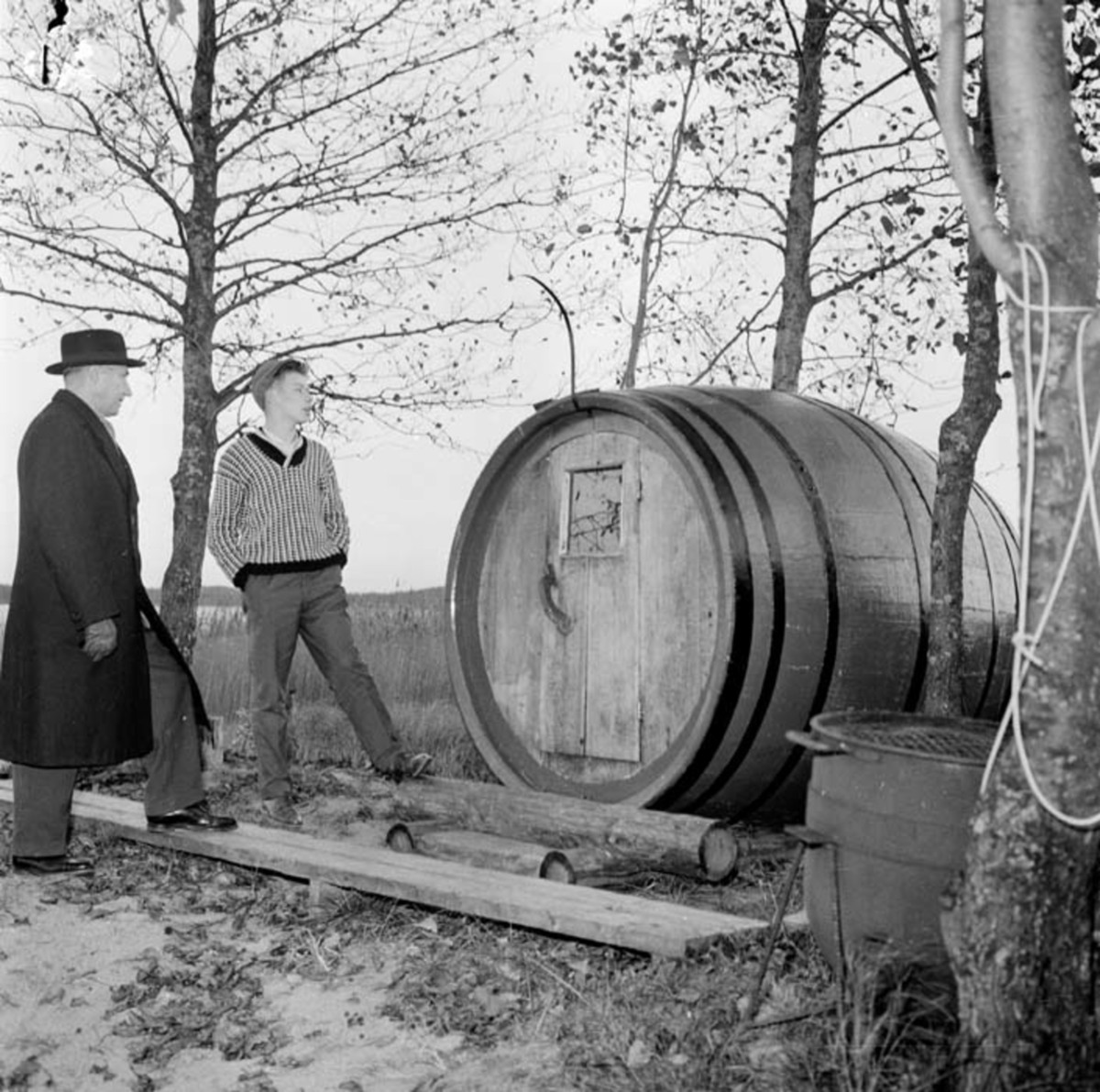
Some things catch my eye in the old photos besides the features mentioned above. Small windows on the sides became a standard option. Very important for mobility, the sauna was always built on skids. The skids were very useful for transporting and moving the saunas around. Although not discussed in the book, the notion of mobility was crucial for saunas because of building legislation that came into effect in the following decades.
Shortcomings of the chronicle
The book is not a literary masterpiece. Look, feel, and writing all speak of self-published work that has not been edited or proofread. The Finnish language is, luckily, generally on a good level, but given its short format, the mistakes and typos stand out. Overall, it comes of short of professional writing. The curation of photos is a good complement, but the pictures themselves are of variable quality and don’t cover all areas of interest. This brings forth the bigger problem of selective history writing and lack of research.
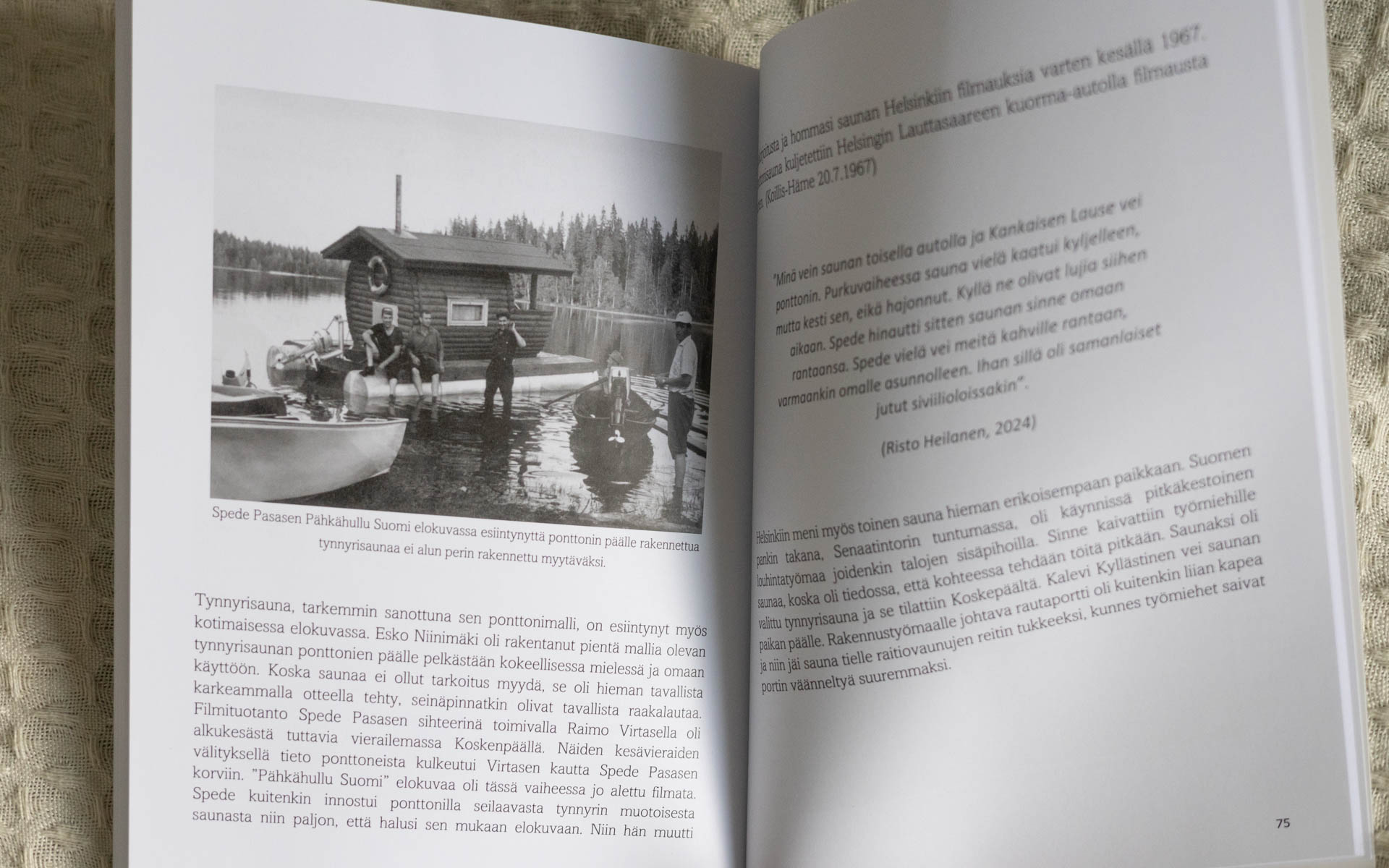
The author has not made much effort to challenge any of the starting premises or seek narratives outside Koskenpää. Although the specific story gets told, there is no serious consideration for parallel developments of the same idea outside Koskenpää. The fact that Niinimäki never got the patent he sought would have deserved more attention. One reason might be that variations of barrel sauna were already in use before the Koskenpää model. One example from 1957 is found in the Finnish national photo archive: https://finna.fi/Record/museovirasto.F8C734D827ECDAB19F03C7972D01B6BD?sid=4930638047
However, given the different world of information flow back then (you know, pre-internet), Esko as likely did come up with the idea on his own, unaware of the others who had empty barrels at their disposal. It’s clear that Niinimäki deserves credit for pushing the barrel sauna concept further, but the idea probably was not without a precedent.
What was not said
We’ve been only talking about Finland. Author Keronen mentions the present-day blooming barrel sauna production around the world but provides no attempt to trace down the history in every competing country, for example, in Estonia. The assumption is that people in Finland and elsewhere just copied the Koskenpää model. He also leaves a few other loose ends in the story, for instance, repeated mentions of smoke saunas and omitting to say what happened with the two tar barrels that started everything.
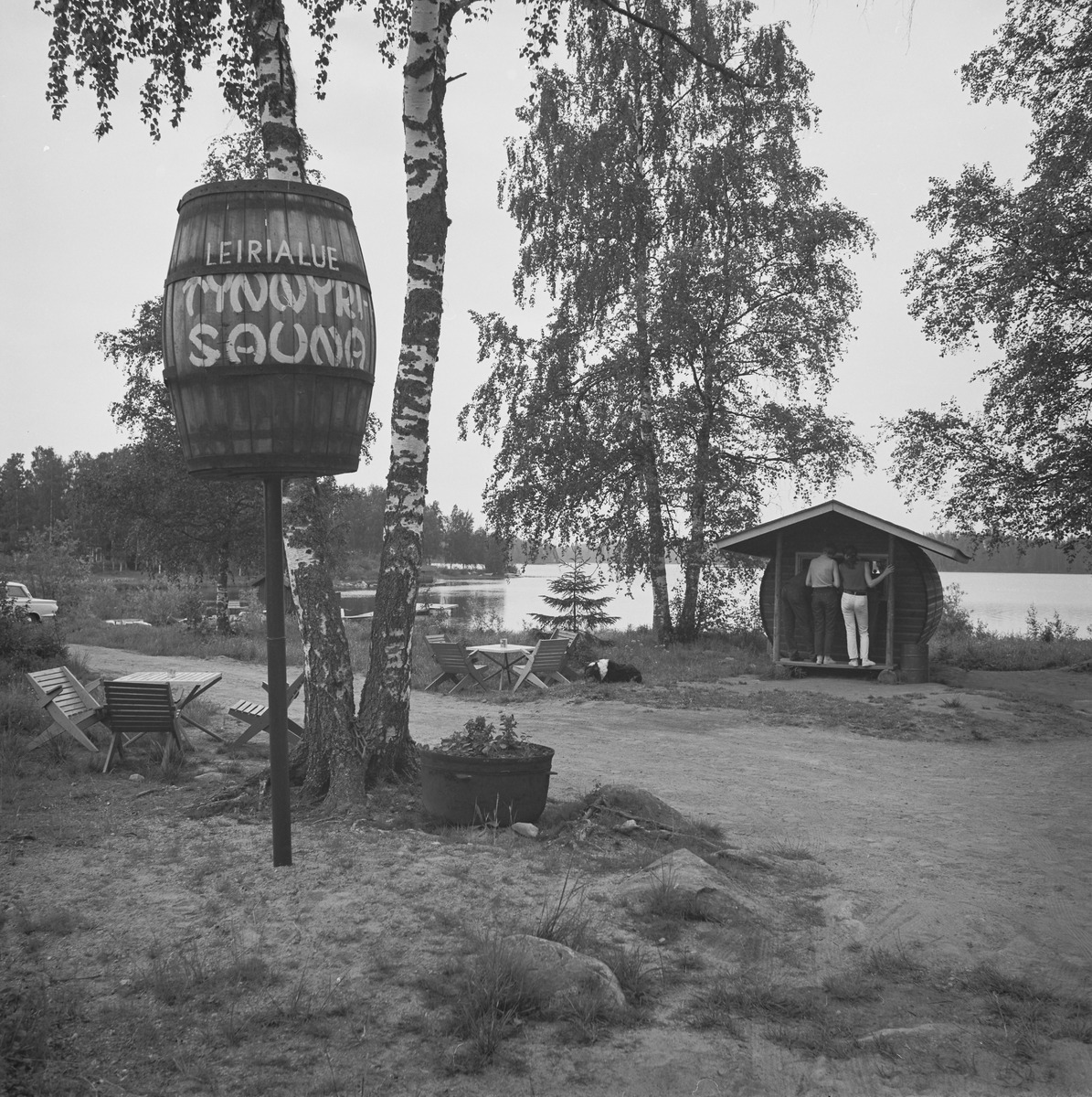
As I interviewed Keronen, it turns out that smoke saunas were found at the Koskenpää campsite called Kievarin rantapirtti, where the original barrel sauna can still be found today. And the first Koskenpää saunas were constructed out of the tar barrels.
The book also comes short of technical details. Instead of sauna details, he has focused on contemporary interviews, and there is no single photo of old-generation sauna heaters to be found. Modern-day Koskenpää barrels use Harvia heaters, but this big diversion from the origins is not mentioned in the book.
Finally, little consideration is given to why Koskenpää sauna made a small success and a large impact it did. Here, the obvious answer is that timing was right. In 1960’s, the wave of urbanization and post-ward industrialization was in full swing. Finland was recovering from war reparations, and some wealthier city-dwellers were investing in summer cabins. The new interest in the lake and river shores of rural Finland was not yet contained by legislation that would, in the 1970, place restrictions on what and how one could build near the shores.
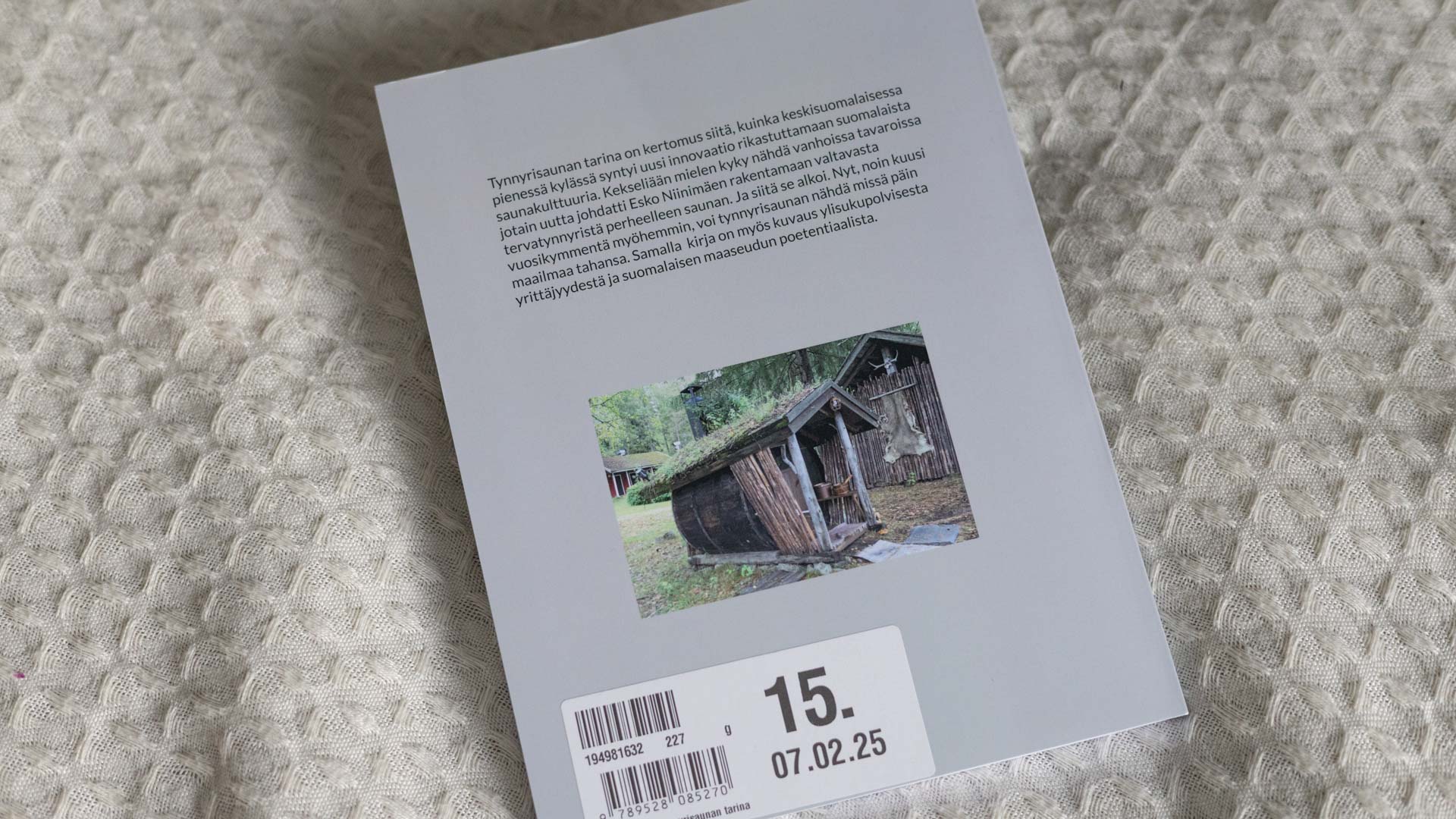
All of this meant that there were enough opportunities, people with money, and free space to place a few barrel saunas. As can be seen from the photo on a map associated found in the book (I have not included it here) with Koskenpää sauna sales, Koskenpää remained a local business. Most of the saunas were sold within the small circle in central Finland. This demonstrates how Niinimäki got the lion’s share of the most conveniently available business, but most of the country was split among other barrel sauna manufacturers.
Summary
The Koskenpää barrel sauna history is a light reading with few funny anecdotes. It explains credibly how the sauna came about and how the first few decades of the small enterprise went. It is a humble book in a humble format with humble writing. But it does raise the invention of Esko Niinimäki to a pedestal, showing that the initial idea for a barrel was likely superior to its later copies. For instance, just a proper insulation and vapor barrier would lift many modern-day barrel saunas to a new level. As a book investment, paying approximately 20€ seems comparatively high given the evident shortcomings.
The book is available through Books on Demand for shipping across the Europe and at several other retail outlets: https://kirjakauppa.bod.fi/tynnyrisaunan-tarina-jukka-keronen-9789528085270
Thanks to Jukka Keronen for the phone interview.
